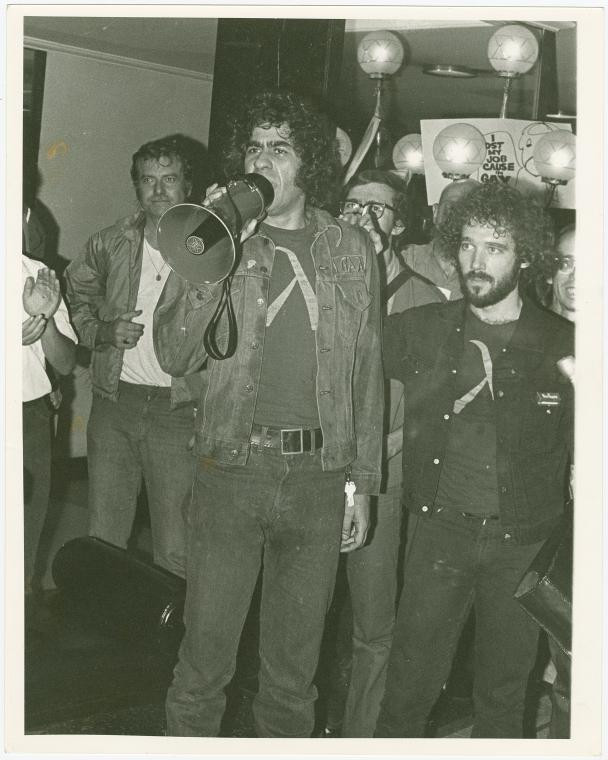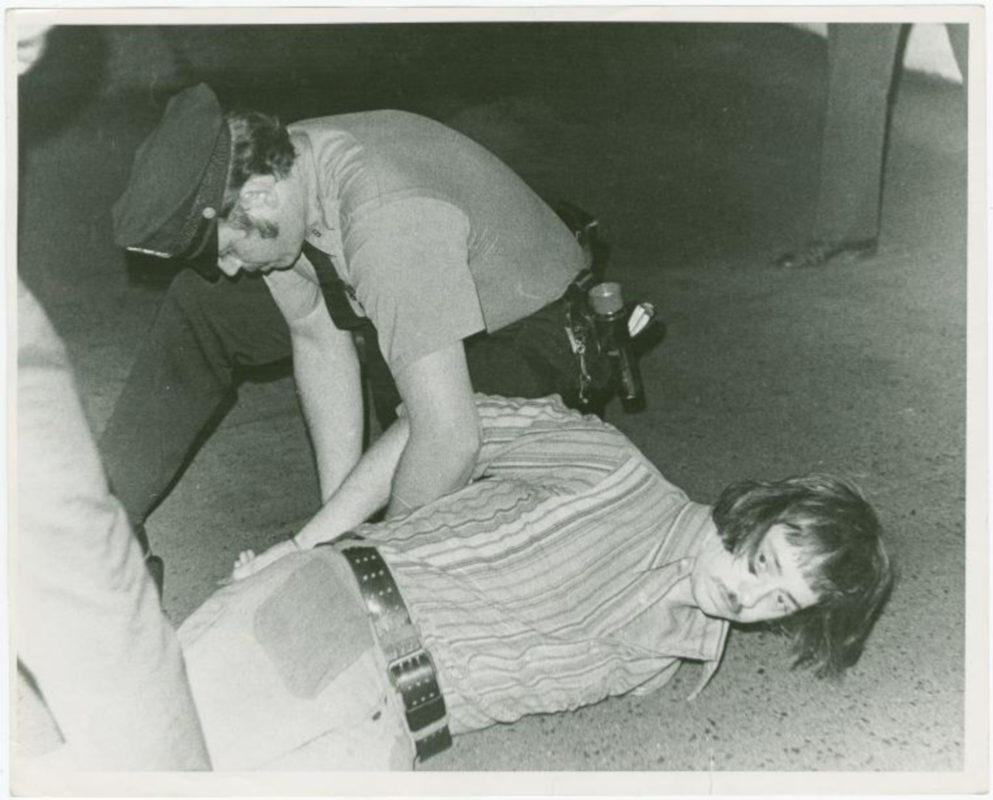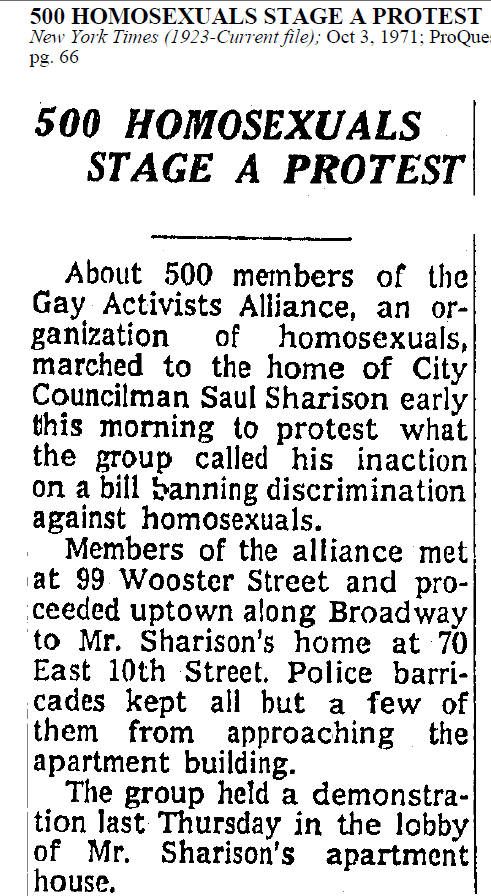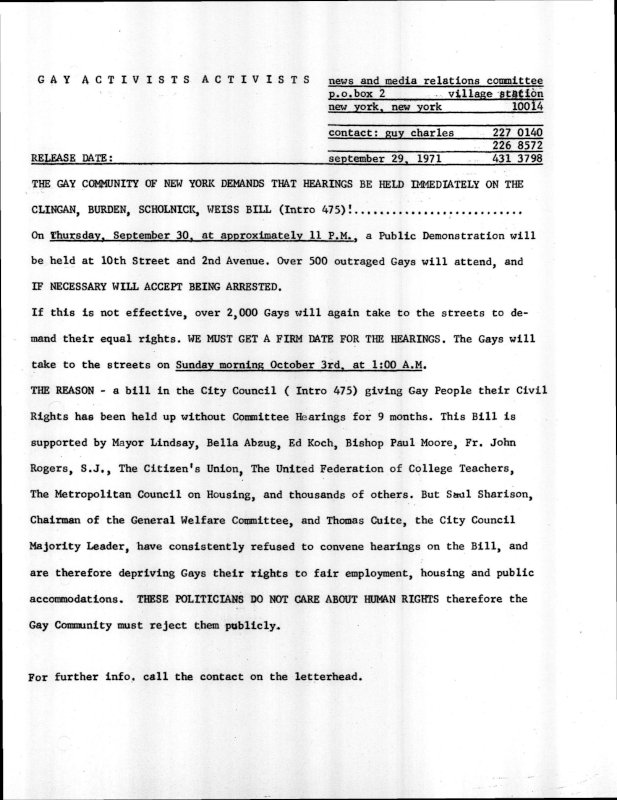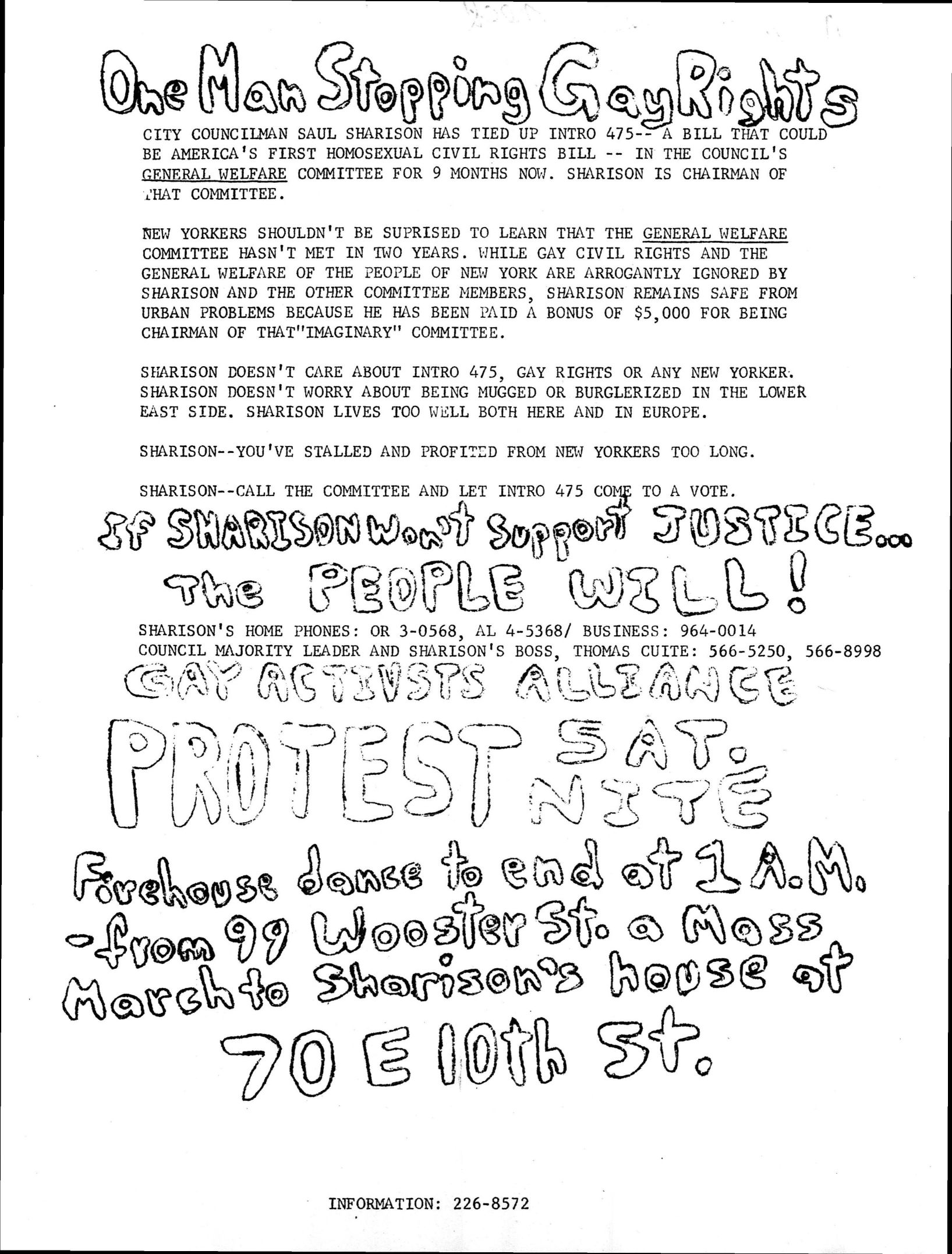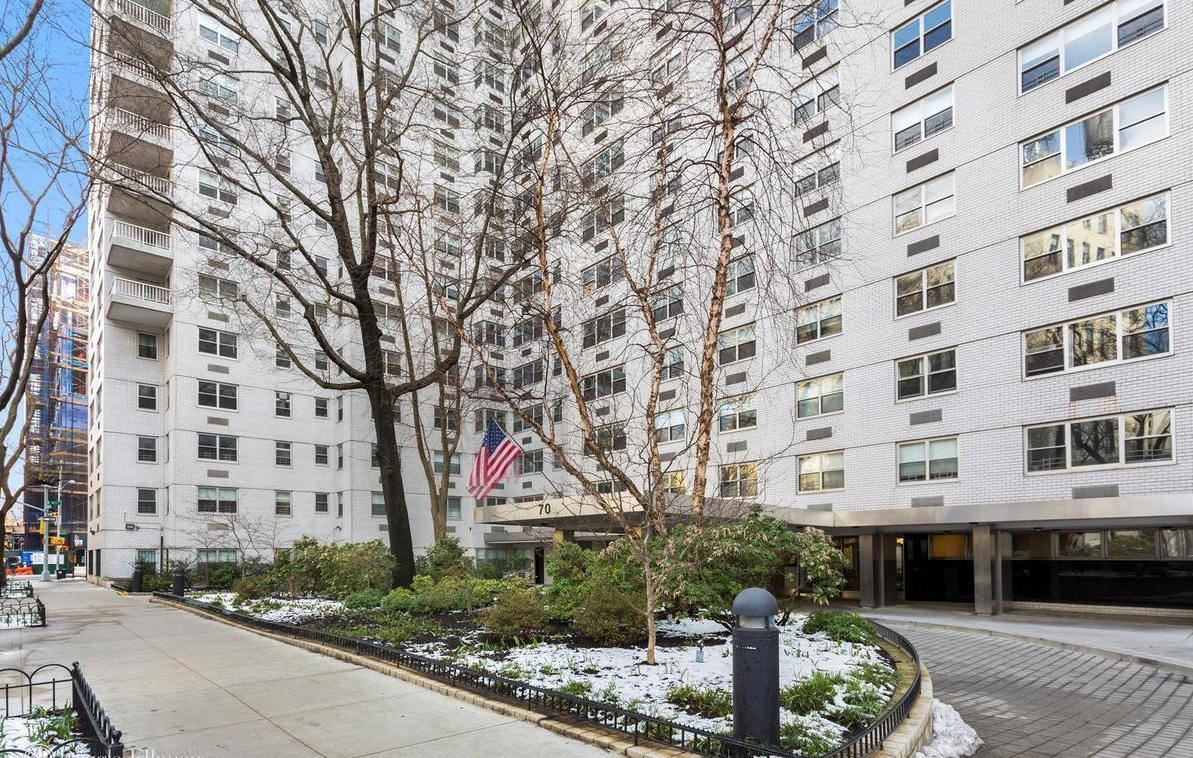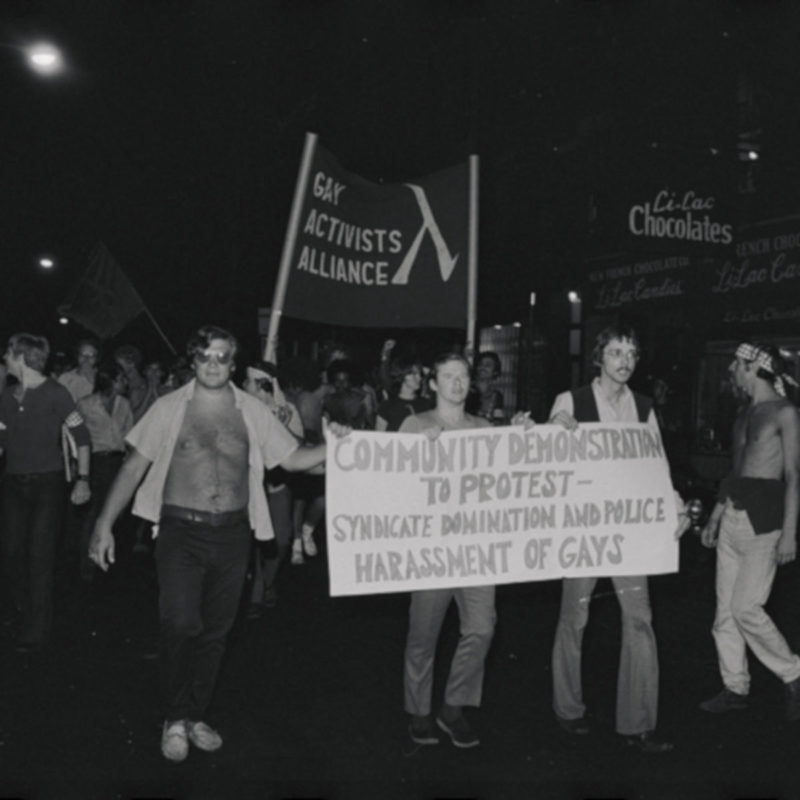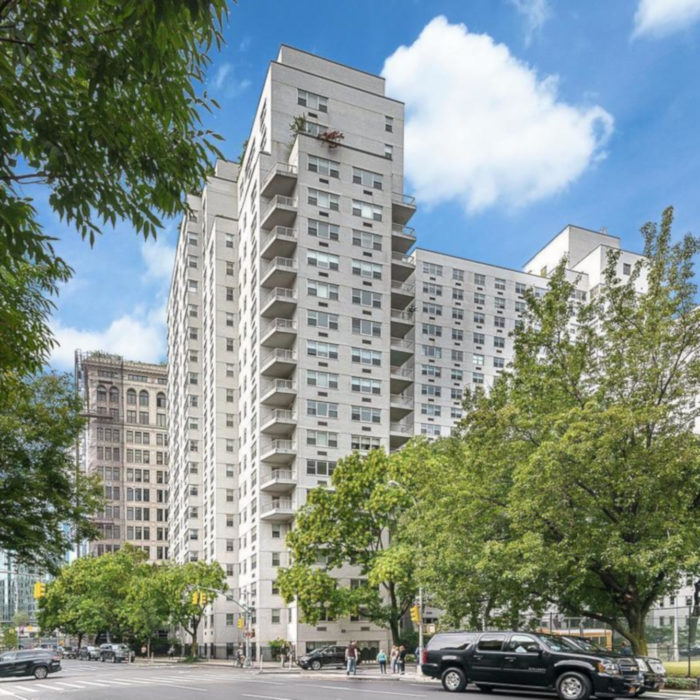
Gay Activists Alliance Zaps at Saul Sharison Residence
overview
On September 30 and October 3, 1971, the Gay Activists Alliance zapped the apartment building of Saul Sharison, chair of the City Council’s General Welfare Committee, for taking no action on Intro 475 (Clingan-Burden Bill), which proposed to prohibit discrimination in housing, public accommodation, or employment based on sexual orientation.
History
The Gay Activists Alliance (GAA) had attempted for nine months to pressure New York’s City Council to hold hearings on Intro 475 (Clingan-Burden Bill), which had been introduced on January 6, 1971, to prohibit discrimination in housing, public accommodation, or employment based on sexual orientation under the NYC Human Rights Law. Passage of Intro 475 became one of the major goals of GAA, but it was stalled with no committee assignment under the Council’s homophobic Democratic Majority Leader Thomas J. Cuite. After a GAA zap at City Hall protesting Cuite on June 25, 1971, Councilman Saul Sharison, chair of the General Welfare Committee, was assigned Intro 475 by Cuite. (See our curated theme for background on the “zap” tactic.) GAA found, however, that Sharison was paid $5,000 a year to chair a committee that had not met in two years, with scores of bills languishing.
GAA decided to zap Sharison’s apartment building, Stewart House at 70 East 10th Street, on September 30, 1971. The group ended its general meeting at the GAA Firehouse early and its members marched up from SoHo and demonstrated in the apartment building lobby at 10:00 p.m. After tenants, police, and media arrived, the activists moved outside and protested.
Two days later, on Saturday October 2, GAA leafletted in Greenwich Village, announcing another planned action at Sharison’s residence. After the Firehouse dance that evening ended at 1:00 a.m., on October 3, a crowd of some 1,000 people (the New York Times estimate was 500) marched up Broadway to the building. This time, police were waiting behind barricades, and a number of activists were clubbed. At 2:00 a.m. GAA’s Municipal Government Committee chair Marc Rubin and five others were invited into the lobby for a discussion with a representative of Mayor Lindsay. Rubin, Arthur Evans, Greg Francis, Lon Lowry, Pete Fisher, and Charlie Burch were arrested around 2:30 a.m. after refusing to leave the lobby. Shortly after, several GAA members were again clubbed by police, east of the building. This was the only known GAA zap captured on police surveillance tapes.
Sharison actually released Intro 475 five days later, and three hearings were held, but it died in his committee on January 27, 1972. The “Sharison 6” were found guilty of unlawful trespassing and disturbing the peace. GAA lawyer Hal Weiner negotiated their conditional release, but Burch refused and was fined.
Read about other GAA actions, listed in chronological order, in our curated theme.
Entry by Jay Shockley, project director (August 2020).
NOTE: Names above in bold indicate LGBT people.
Building Information
- Architect or Builder: Sylvan and Robert Bien
- Year Built: 1959-60
Sources
“500 Homosexuals Stage a Protest,” The New York Times, October 3, 1971, 66.
David Jones, “A Day in Court – the Sharison Six,” Gay Activist, November 1971.
Gay Activists Alliance, press release, September 29, 1971.
George Weinberg, “What is The Gay Activists Alliance Really Doing?,” GAY, March 6, 1972, 13, 18.
“Intro 475 Now!,” Gay Activist, October 1971, 1-2.
Do you have more information about this site?
This project is enriched by your participation! Do you have your own images of this site? Or a story to share? Would you like to suggest a different historic site?
